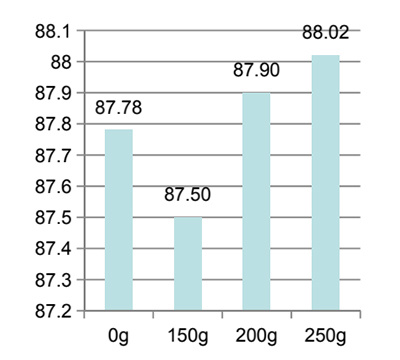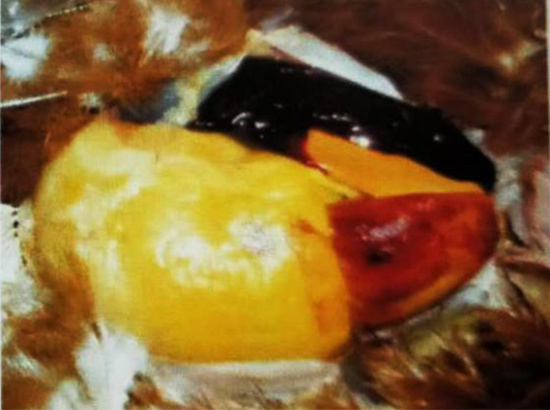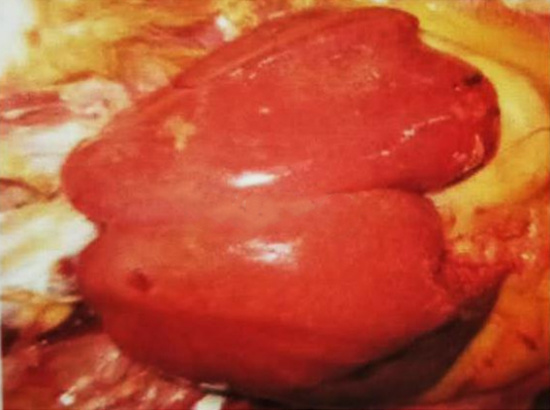Poultry feed supplement bile acid
Bile acid is a organic acid extracted from animal gall, which can promote fat to be emulsified, digestion and absorption, participate in the whole metabolism of fat. And can promote bile secretion, prevent fatty liver.
Palabras clave:
Categoría:
Application
Poultry
Correo electrónico:
Poultry feed supplement bile acid
Description
RENGTY® Bile acid is the main active ingredients of bile produced from cholesterol in liver, which is one synthesis sterols material with multiple bio-activities and play an important role in fat metabolism. It can promote fat metabolism, protect liver and gall, it is a high efficient fat digestion and absorption promoter with natural biological activity. It can make up for the lack of bile acid secretion of animal, releasing the potential energy of feed, support animal health for poultry, livestock and aquaculture, enhance the feed utilization and lower the feed cost. It is extracted naturally, which is one kind of green and environmental friendly feed additives.
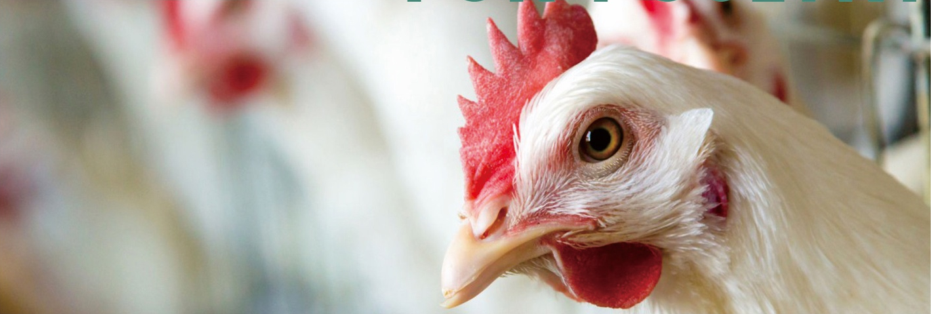
Specification
|
Product name |
Bile acid |
|
Identification |
HPLC |
|
Bile acid content |
20%, 30%, 80%, 90%, 95% |
|
Appearance |
White to yellow powder |
|
Odor |
It should have no smelly, taste is bitter |
|
Particle size |
More than 90% pass through the standard sieve of 60 mesh |
|
Solubiltiy |
Slightly soluble in water |
|
Loss on drying |
≤10% |
|
Plumbum (Pb) |
≤40 mg/kg |
|
Arsenic (As) |
≤10 mg/kg |
Function
Functions on broiler/duck
1. Lower feed cost, ME could be reduced by 20-50 kcal.
1. Improve the growth performance, FCR could be improved 5%-10% and the housing time could be shortened 1-2 days with same body weight.
3. Improve slaughter performance, carcass rate could be improved by 0.8%-1.5%.
Functions on Layer/breeder
1. Provide enough energy and the laying rate could be improved by 1%-2%.
2. Prevent fatty liver and enhance anti-stress ability.
3. Prolong the peak time of laying eggs, improve quality of eggshell and reduce egg broken rate.
4. For incubation period layers, tibia length and body weight both fully meet the standards.

Action Mechanism
Promote the digestion and absorption of fat and fat soluble substance
1. Emulsify fats and expand contact area with lipase
Bile acid have biosurfactant amphiphilic molecule structure with hydrophilic (hydroxyl, carboxyl) and hydrophobic (alkyl), have strong surface activity, which can effectively emulsifies fat into lipid droplets or chylomicron and improves the solubility of insoluble substances such as cholesterol in water.
When hydrophobic end break the large fat into small oil droplets, the hydrophilic end will wrap around small oil droplets, make fat infused into the water to finish fat hydrolyzation process. So bile acid greatly enlarge the contact area fat and lipase, convenient for fat digestion.
2. Regulate the activity of pancreatic lipase (LPS) and lipoprotein lipase (LPL) to promote the hydrolysis metabolism of fat
The spatial structure of pancreatic lipase has three cap domains covering its catalytic sites. Bile acid can change this structure and expose the active site to the substrate and play its lipodysis role, so bile acid can activate the activity of pancreatic lipase to promote the hydrolysis metabolism of fat.
The apolipoprotein contained in chylomicron emulsified by bile acid can improve the activity of lipoprotein lipase therby greatly increase the hydrolysis metabolism of fat.
3.Transport fat in the intestinal and promote fat absorption
Bile acids can combine with all decomposed products of fats in the intestinal cavity such as fatty acid, monoglyceride etc. to form a water-soluble mixed micelle.
The mixed micelle carries all fat decomposed products, large amount of fat-soluble vitamins, carotenoids and other nutrients to reach to surface of small intestinal villus and get into bloodstream, where they are absorbed.
So bile acid serve as necessary carrier for the insoluble fat hydrolysates to reach the intestinal mucosal surface and is important for the absorption of fat decomposed products.
4. Reduce the decomposition of autogenous fat
Hormone-sensitive lipase (HSL) is a rate-limiting enzyme for degradation of autogenous fat.
Bile acids can significantly reduce the activity of hormone-sensitive lipase thereby lower catabolism of autogenous fat, so it significantly reduced the catabolism of autologous fat by regulating the activity of hormone-sensitive lipase.
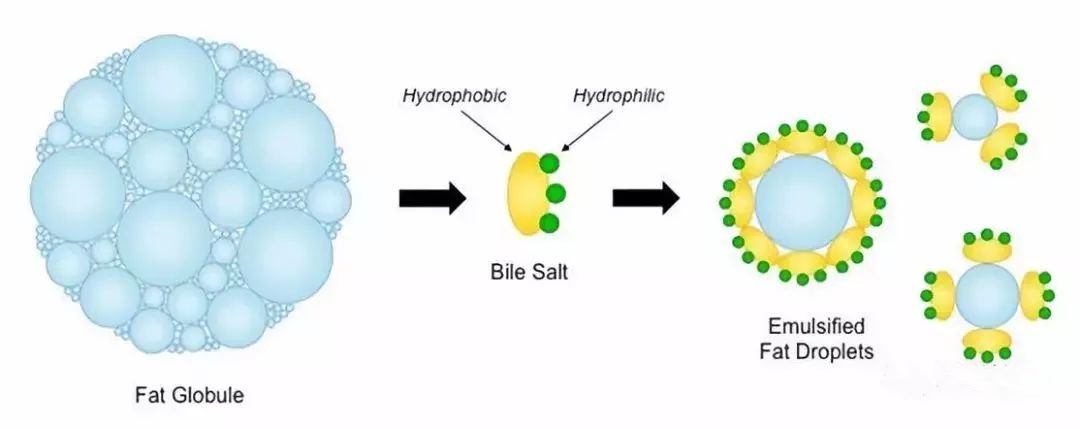
Protect liver and gallbladder health
1. Prevent fatty liver
Bile acid can transport fat and cholesterol, reduce the accumulation of fat in the liver, promote the compound of VLDL (very low density lipoprotein) and prevent liver diseases such as fatty liver, hepatobiliary syndrome, biliary obstruction and so on.
2. Promote bile secretion
Promote the bile secretion, unimpeded biliary and reduce the burden of liver synthesis bile acid, let the liver rest more.
3. Eliminate toxin
The liver is plagued by mycotoxins (aflatoxin, gibalenone, T-2 toxin, vomiting toxin, etc.), endotoxins (the main component is lipopolysaccharide, which is the remaining cell wall component after the killing of Gram-negative bacteria.) and heavy metals (arsenic, mercury, copper, zinc etc.) for a long time, and its own health is constantly deteriorating. Bile acid can bind and break down endotoxins, relieve the burden of liver and intestines. Help liver detoxification, provide a safe and healthy environment for liver cells, protect liver cells from the invasion of toxins such as mycotoxins, algal toxins, heavy metal ions and drug toxins so on.
4. Promote liver development
Bile acid can improve the digestion, absorption and utilization of fat and provide lipid nutrition for the development of hepatopancreas.
5. Restore liver and pancreas
Bile acid can activate insulin activity, activate thyroxine activity, effectively promote fat burning energy supply, reduce protein loss, promote liver cell repair, and enhance immune protein synthesis
6. Regulate cholesterol metabolism
Bile acid can accelerate the transfer of cholesterol in HDL (high densitylipoprotein), maintain the balance of cholesterol in animal body, and regulate cholesterol metabolism. One third of cholesterol catabolism is achieved through the synthesis of bile acid, which provides an important excretory pathway for cholesterol metabolism.
7. Antioxidant and anti-stress
Bile acid can enhance the activity of SOD (superoxide dismutase), glutathione peroxidase (GSH) and glutathione reductase (GSR), eliminate free radicals in animals’ body and improve the anti-stress ability of animal, resist lipid oxidation and protect hepatopancreas.
8. Promote the growth
Bile acid can increase the level of the main substance IGF-I that regulates animal growth and the main factor GH that promotes cell protein synthesis and cell growth in animal blood, promotes animal growth.

Bile acid circulation
The bile acids are emulsified into glycerol and fatty acids in the small intestine to form the fatty acid-bile salt complex, which is absorbed by the chorionic membrane of the small intestine and separated from the fatty acids, and then transported into the liver through the portal vein. After uptake by liver cells, the free bile acids are synthesized and combined bile acids are discharged into the intestine to complete a hepatointestinal circulation.
Recommended Dosage of bile acid 30%
|
Species |
Dosage (g/ton feed) |
|
Broiler |
100-200 |
|
Laying hen |
200-400 |
|
It is suggested that bile acids should be used in combination with emulsifier for better effect. |
|
Application of bile acid in broilers
1.Effect on growth performance after adding Bile acid in broiler diet
432 1-day-old AA broiler male chicks were randomly divided into 4 groups, The control group was the basic complete feed diet, and the three experimental groups were added with 150, 200, and 250g/T of bile acid respectively to the basic diet for 42 days. (Shandong, 2017)
|
Average Daily Gain (g)
|
Daily Feed Intake (g)
|
Feed Conversion Ratio
|
2. Effect on slaughter performance after adding bile acid in 0-42d broiler diet
|
Group |
Dosage of bile acid(g/t) |
|||
|
0 |
150 |
200 |
250 |
|
|
Dressing carcass percentage |
90.25a |
90.60a |
92.47b |
93.02b |
|
Percentage of eviscerated yield |
71.69a |
72.44a |
74.81b |
75.00b |
|
Percentage of half-eviscerated yield |
82.97a |
82.45a |
86.34b |
86.18b |
|
Percentage of breast muscle |
20.55 |
21.05 |
21.08 |
20.77 |
|
Percentage of leg muscle |
18.06a |
18.10a |
19.94b |
20.60b |
|
Percentage of abdominal fat |
1.45a |
1.48a |
1.12b |
1.14b |
Conclusion:
Dietary supplementation of 200 and 250g/t bile acid can significantly increase the daily gain, reduce the feed to meat ratio, significantly improve the slaughter percentage and leg muscle percentage, and significantly reduce the abdominal fat percentage of broilers.
3. Effect on fat-soluble vitamins usage after adding bile acid in broiler diet
84 AA+ broilers were randomly divided into control group, trial group 1 and trial group 2 with 28 chickens in each group and 2 replicates with 14 chickens in each replicate. Broilers in control group were fed a basal diet, test group 1 was supplemented with 200mg/kg bile acid (30%), and test group 2 was supplemented with 400mg/kg bile acid. Determination of fat-soluble vitamins A, D, E and K in liver and serum of broilers. (Shandong Agricultural University, 2020)
|
Indicators |
Parts |
Control group |
Bile acid dosage (mg/kg) |
|
|
200 |
400 |
|||
|
Vitamin A (nmol/L) |
liver |
9387.25±128.86b |
9537.32±133.88b |
11525±146.69a |
|
serum |
1010.21±36.19b |
1122.28±38.45b |
1292.23±78.59a |
|
|
Vitamin D (nmol/L) |
liver |
216.00±8.36b |
223.65±5.91b |
260.60±5.37a |
|
serum |
22.09±0.92b |
27.64±0.73b |
31.30±2.38a |
|
|
Vitamin E (nmol/L) |
liver |
415.29±6.81b |
415.43±8.32b |
449.83±6.31a |
|
serum |
52.97±1.76b |
57.15±2.05b |
66.23±2.47a |
|
|
Vitamin K (nmol/L) |
liver |
119.56±2.76b |
115.29±2.38b |
134.23±2.82a |
|
serum |
13.32±0.32b |
14.42±0.55b |
17.35±0.98a |
|
Conclusion:
The supplementation of 400mg/kg bile acid in the diet of broilers significantly promoted the absorption of fat-soluble vitamins and increased the deposition of fat-soluble vitamins in the liver, and increased the utilization rates of vitamin A and D by 15-20% and vitamin E and K by 10-15%.
Application of bile acid in laying hens
1.Effect on production performance after adding Bile acid in laying hens
Six thousand 245-day-old Roman brown laying hens were randomly divided into control group and experiment group with 3 replicates per group and 1000 laying hens per replicate. Hens in the control group were fed a basal diet and those in the experimental group were fed 500mg bile acid (30%). The pre-trial period lasted for 7 days. The trial lasted for 30 days.(Linyi, Shandong, 2019)
|
Groups |
Laying rate |
The average egg weight |
feed-gain ratio |
Broken egg rate |
Soft shell rate |
Misshapen eggs rate |
death and culling rate |
|
Control group |
92.85a |
61.90a |
2.09a |
0.89a |
0.82a |
0.81a |
3.30a |
|
Experiment group |
94.45b |
62.20a |
2.05b |
0.16b |
0.21b |
0.15b |
1.20b |
Conclusion:
Adding bile acid to the diet of laying hens can increase the laying rate, reduce the feed to egg ratio, death rate, unqualified egg rate, such as sand shell egg, soft shell egg, crystal egg, etc. Improve the color of egg yolk and shell.
2. Effect on egg quality after adding Bile acid in laying hens
Hy-Line brown laying hens aged 240 days were randomly divided into control group and experimental group with 4 replicates per group and 15 laying hens per replicate. Hy-Line brown laying hens in the control group were fed the basal diet, and the experimental groups were fed the basal diet supplemented with 50ppm, 100ppm and 150ppm bile acid, respectively. The experiment lasted for 42 days. (Northeast Agricultural University, 2018)
|
Indicators |
Bile acid dosage |
|||
|
0 |
50ppm |
100ppm |
150ppm |
|
|
Yolk color |
5.18b |
5.45b |
6.34ab |
7.51a |
|
Albumen height (mm) |
7.15b |
7.57b |
7.85ab |
8.02a |
|
Haugh unit |
82.23b |
85.38ab |
87.75a |
88.42a |
The results showed that the yolk color, the height of the concentrated albumen and the Haugh unit were improved in the diet of laying hens supplemented with bile acid.
3. Hepatoprotective effect of Laying hens
Sixteen thousand laying hens were selected for the experiment. A small amount of diarrhea and sporadic death occurred at the age of 240 days. The laying rate gradually decreased from 95% to 90%. It was diagnosed as fatty liver of laying hens by veterinarian anatomy, and it was recommended to use bile acid as daily health care drug. After 2 weeks of continuous use, feces returned to normal, sporadic deaths stopped, and egg production rate returned to 95% of normal.
|
|
|
Packaging and storage
|
Sample |
20g/bag, 200g/bag, 300g/bag, 500g/bag, 1kg/bag, 2kg/bag, 5kg/bag |
|
Packaging |
20kg/25kg/bag, 25kg/drum or as requirements |
|
Pallet |
If 20kg/bag, 1000kg/50bag/pallet |
|
Container |
One 20'GP can contain 10-14 tons if bag |
|
Storage |
Stored 24 months sealed in a cool, dry and airy place away from light. |
Delivery and transport
Port of loading: Qingdao or any port of China as requirements
Delivery time: 10-20 days shipment after signed contract
|
By Express |
By Air |
By sea |
By land |
|
Suitable for under 50kg Fast: 3-7 days High cost Door to door service Easy to pick up the goods |
Suitable for more than 50kg Fast: 3-7 days High cost Port to port service Professional broker needed |
Suitable for more than 500kg Slow: 7-45 days Low cost Port to port service Profissional broker needed |
Suitable for more than 500kg When by sea can not arrive at you, you can select land transportation, by train or by motor |
General speaking, EMS, TNT, DHL, UPS by express, by air and by sea is main shipping terms.
By express for quantity less than 50kg cargo, also called DDU service.
By sea for quantity over 500kg.
By air is available for above 50kg.
For high value products, please select air shipping or DHL express for safe.
If the cargo quantity is more than 500kg, but by sea can not arrive at you, please select land transportation, by train or by motor.

Prev
The best solution bile acid for trophic diarrhea
Productos recomendados
Investigación ahora



